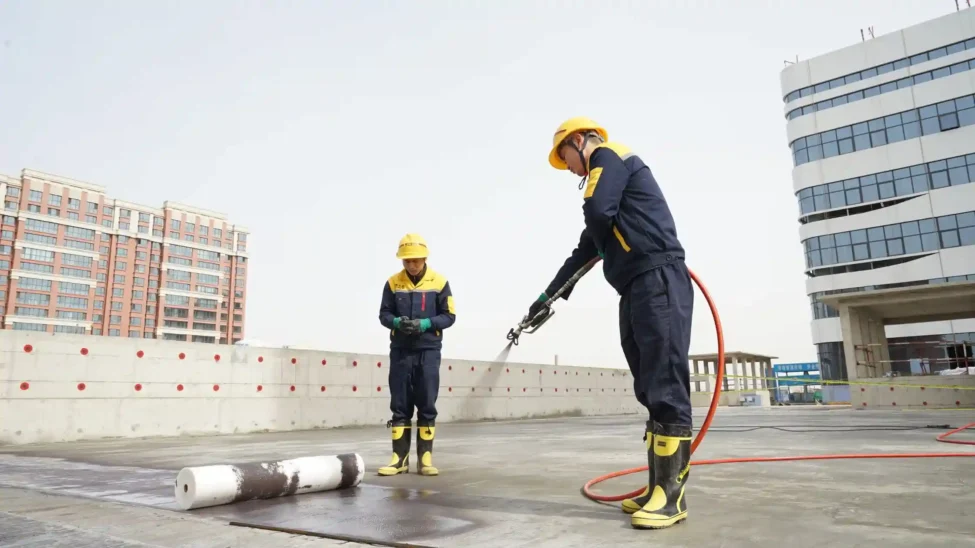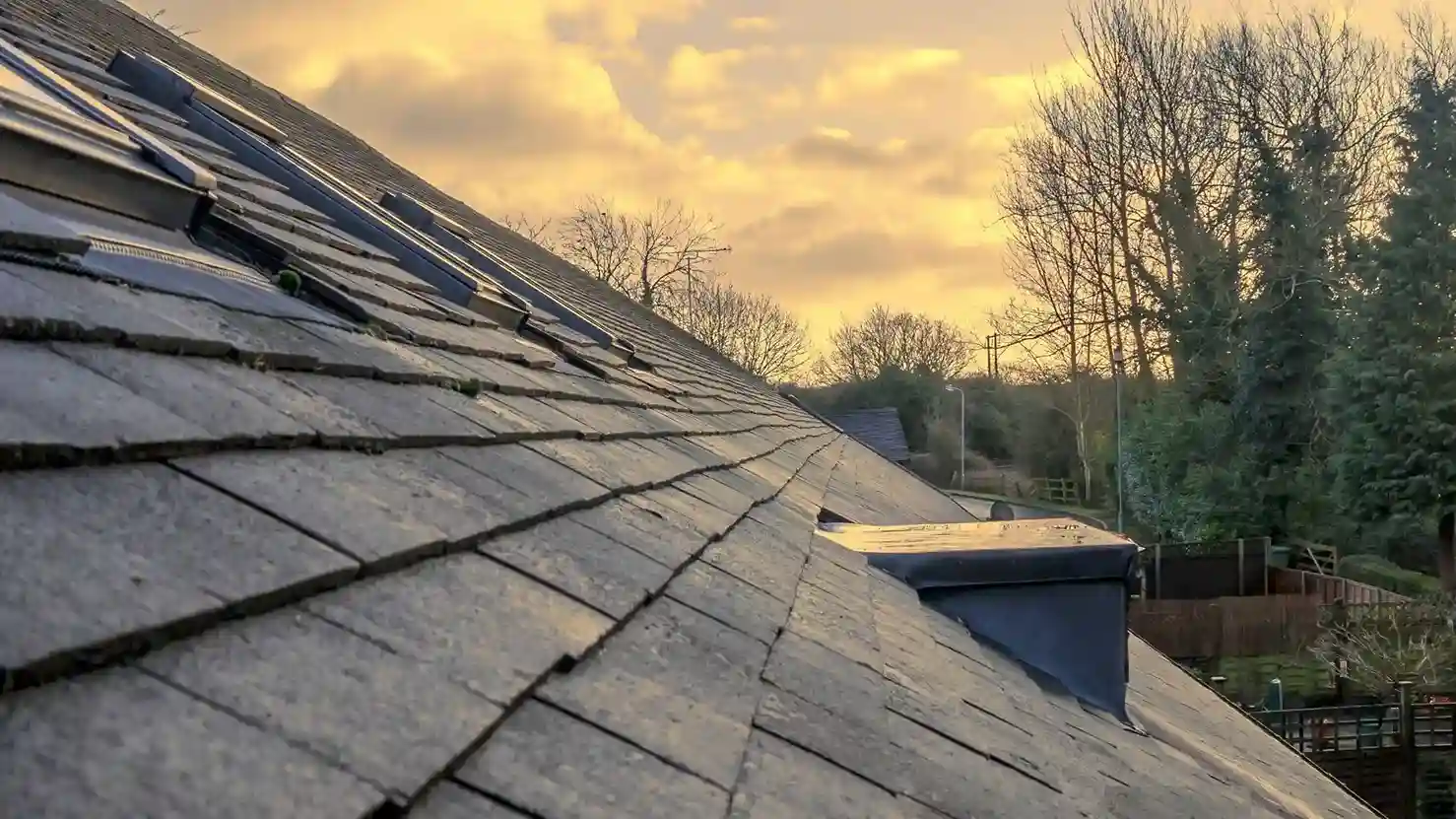
Ultimate Guide to Waterproofing in Construction: Protect Your Building from Water Damage
Water is one of the worst things in any building. It could be a house or a large commercial building, but water damage can jeopardize the strength and durability of any construction project. This is where waterproofing in construction becomes critical.
Otherwise, the buildings will leak and crack and structurally droop, which would be very expensive to fix. This blog will explain what exactly is waterproofing in construction, why it is so important, the different types, and the methods used to keep your building safe.
What is Waterproofing in Construction?
Waterproofing is a term that describes the process of making roofs, walls, foundations, and other building elements impervious to water. It creates a type of shield that won’t allow any liquid to pass through the surface, keeping the inside nice and dry and safe.
This waterproofing is not only to protect the structure but to ensure that it lasts as long as possible and this is a very important factor in construction.
Why is Waterproofing Important in Construction?
Waterproofing is essential for several reasons: Waterproofing is essential for several reasons:
- Prevents Water Damage: If it is not properly waterproofed, then water is going to leak into the walls, the roofs, and the foundations, and it is very expensive to repair that kind of damage.
- Improves Building Longevity: Waterproofed buildings tend to be more durable, as they are safeguarded from the destruction caused by moisture.
- Enhances Safety: Then all the water damages the building and it eventually becomes too structurally unsound to live in. Waterproofing helps maintain the safety of the structure.
- Increases Property Value: On the whole a building that is properly waterproofed is preferred, because one would be willing to pay more for a building that has that protection.
Types of Waterproofing in Construction
There are to many types of water proofing in construction, they all have there place, but it depends on the structure and location. Let’s explore the most common ones:
1. Bituminous Membrane Waterproofing Method
It is one of the more popular waterproofing methods for flat roofs. It’s like they put a “membrane” of bitumen over the entire structure to make it completely waterproof. It has to be really strong and flexible (which is good since its used on roofs and other flat surfaces.
2. Cementitious Waterproofing
This process is called cement lining and is used to line structures like water tanks, bathrooms, and basements. It is one of the easiest types to apply and it is often used in the slab waterproofing stage.
3. Liquid Waterproofing Membrane
It works by brushing on a kind of liquid skin that hardens to a rubbery finish. It can be applied to roofs, balconies, and terraces. It’s versatile and can be used on many different things.
4. Polyurethane Waterproofing
Good on flat roofs and wet areas this includes a coating of polyurethane which turns out to have extremely waterproofing properties. It is simple to use, but is somewhat temperamental to the amount of moisture present when it is applied.
5. Wall Waterproofing Products
Then there are those waterproofing thingys on the wall to prevent the water from seeping through the wall. These are for outside or inside usage, once more according to the problem area.
Waterproofing Process: How It Works
The waterproofing process typically involves several steps, depending on the method used. Here’s a general outline of how the process works:
- Surface Preparation: Clean and level it and fix it if needed. So all cracks and holes must be filled before the water proofing stuff goes on.
- Application of Waterproofing Materials: Depending on the method, different water proofing materials are used, membranes, liquid coatings, cementitious products.
- Drying and Curing: The stuff needs time to dry and build up that wall of defense. And that curing time can also be influenced by method and weather.
- Final Inspection: After the waterproofing layer is applied and allowed to cure, another inspection is done to check for any weak points or places that need additional focus.
And if you do the waterproofing process you will have a relatively dry building for the next 50 years or so.
Latest Waterproofing Techniques
But as the times has changed, the last few years have brought along new (and better) ways to waterproof. Some of the new methods include:
- Nano Coating Technology: THis new process uses nanomaterials, and makes the surface very strong and waterproof.
- Spray-Applied Waterproofing: It just sprays the waterproofing stuff right on the surfaces, and it does it quickly and relatively well, no seams no gaps.
- Self-Adhesive Waterproofing Membranes: These membranes require no other adhesives and are really easy to install perfect for compound curved surfaces.
Key Areas for Waterproofing in a Building
There are certain sections of a building that are more prone to leaking and as such need to be taken into special account when being waterproofed. These include:
- Roof: One of the most exposed aspects of a building’s structure is the roof, which needs a solid slab waterproofing to prevent leaks and damage.
- Basement: Basements being below ground level are very prone to water seepage and must be heavily waterproofed.
- Walls: Not only are the outside walls susceptible to moisture problems, but the inside ones are too, so it is important to get the correct wall waterproofing materials.
- Bathrooms and Kitchens: All the places that have water in them all the time should be waterproofed so no leaking and no moisture build-up.
When it comes to reliable and cost-effective waterproofing solutions, Infra Ratepersqft offers the best rates per square foot for all types of building waterproofing work. From intricate pricing to the newest waterproofing methods, we can promise that your building will remain secure from the ground up.
From bituminous membrane waterproofing techniques to innovative products, Infra Ratepersqft will take care of you with the best possible services and materials.

Conclusion
Waterproofing is a crucial part of any building process because it affects the life, safety, and value of the building. Whether it is your roof or your basement, good waterproofing techniques can save you and your structure from water damage, and thus, costly repairs. Whether you’re constructing a new building or maintaining an existing one, choosing the right waterproofing materials and methods is crucial.
You will be able to make educated choices about your project if you know how the waterproofing works and how to apply the new waterproofing technology. Infra Ratepersqft is your professional, economical, friendly solution to keeping your building safe and dry.
Frequently Asked Questions
1. What is waterproofing in construction?
Waterproofing is the application of materials to the surfaces of a building that will prevent water from penetrating the structure, thus protecting it from damage that can be caused by moisture and leaks.
2. What are the common types of waterproofing methods?
Some of the most popular waterproofing is Bituminous Membrane Waterproofing, Cementitious Waterproofing, Liquid Waterproofing Membrane, Polyurethane Waterproofing, and Wall Waterproofing Products.
3. Why is waterproofing important for a building?
It is so important that the building be waterproofed, because if not, water damage will occur, and the building will not be as durable, and the structure itself will not be as sound with walls, roofs, and foundations all compromised by moisture.



